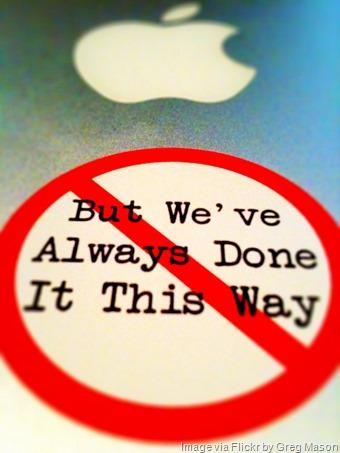 As an advisor to entrepreneurs and new business owners, I’ve long observed that one of the toughest challenges is people change management in the team. It’s an area where you typically have little experience and training, and dealing with needed change is fraught with emotions on both sides. I have found that my years in a big company have paid huge dividends in this area.
As an advisor to entrepreneurs and new business owners, I’ve long observed that one of the toughest challenges is people change management in the team. It’s an area where you typically have little experience and training, and dealing with needed change is fraught with emotions on both sides. I have found that my years in a big company have paid huge dividends in this area.
For new business leaders who are unfamiliar and uncomfortable with people management, I try to offer an easy to understand process for dealing with situations where a team member or direct report needs to change. I found some help in this regard in a new book, “Power Your Tribe,” by Christine Comaford, who has been a business leadership and culture coach for the past 30 years.
Among other insights, she outlines a seven-step counseling process, called a feedback frame, for tough situations, which I will paraphrase here. I believe it will facilitate both you and any team member communicating to get a shared positive understanding of the requirement for change and resolution:
-
First, before diving into specifics, set the stage. As a manager or executive, your pent-up emotion makes it tempting to open with an attack, which immediately puts everyone on the defensive. Instead, you should start with a summary of your goals and objectives for the role, and emphasize the need for a collaborative turnaround plan.
-
State directly observed data examples and behavior. Only then should you describe specific behaviors that must change, and provide your specific examples so the team member can “step into” the past scenarios. Avoid any hearsay or anonymous sources, since these are likely not entirely accurate, and will provoke emotional debates.
-
Quantify the impact on the project and other people. Examples might include instances where the team member missed a deadline, causing the project to fall behind, or poor responses to a customer resulting in lost business. These hurt the company, as well as the specific employee reputation. If not obvious, state the correction required.
-
Ask for problem acknowledgment and playback. You will make no progress until the team member agrees that there is a problem in their work or behavior, and the problem now must end. If you don’t have agreement yet, it’s time to go back to step one. You need this common understanding before the employee will engage in finding a solution.
-
Create a plan together for a specific time period. I recommend a time period of 30 to 90 days where you agree to meet weekly to track progress. Make the plan very specific in terms of what you need to see and when you’ll know the outcome is what you wanted. Clearly state the consequences if the turnaround doesn’t occur (lost job or demotion).
-
Overtly check understanding at this stage. Clearly communicate your conviction that a positive resolution is possible and desirable, which will make the consequence irrelevant. Believe it or not, I find team members often still don’t fully understand why they need to change, or why the specifics you ask for are important to the team and the business.
-
Jointly celebrate small steps and milestones. Launch the plan, and look for every opportunity to acknowledge and reward progress, rather than focus only on failures. Make sure that all concerned see the behavior change also. Verbal feedback should be supplemented by a written weekly summary to the employee, to prevent surprises later.
If you think these steps are a lot of work, you are right, but it’s the most important work you can do for your business, and well as for your team members. The health and success of your business is totally dependent on the health and productivity of your team. Managing the product and the processes is only half your job as an entrepreneur, or less. The rest is building the team.
Obviously, this task is easier if you hire and nurture the right people, to minimize these situations in the first place. You need resilient teams in these turbulent times, so it is well worth your time to understand what it take to maintain a team with the emotional agility to adapt to market changes and customer feedback. Of course, as the leader, it all starts with your own ability to change.

